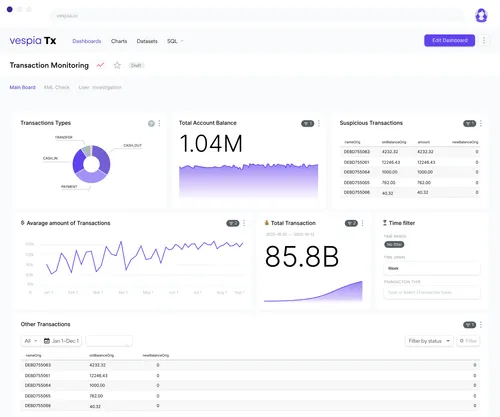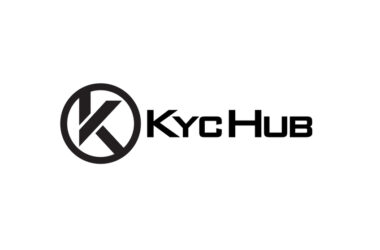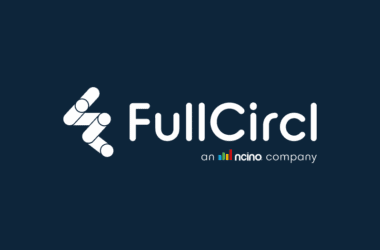|
Getting your Trinity Audio player ready... |
Table of Contents Show
BeVerified Verdict
BeVerified VerdictVespia’s strongest trust signal is its scope-per-click ratio: one query surfaces registry data, sanctions hits and risk scoring in a single pane. For lean compliance teams, that consolidation often trumps vendor size or brand fame.
Why It’s Critical
February 2025, São Paulo: Mastercard’s LATAM merchant-onboarding squad watched KYB queues stack up as manual registry pulls stretched past the lunch break. Plugging in Vespia’s AI rails slashed that cycle by “up to 90 %,” with most approvals landing in under 30 seconds.
So if lost hours translate into lost revenue, the next test is whether Vespia’s own credentials justify that burst of speed.
Fintech CFOs warn that each extra onboarding hour can shave 0.5 % off monthly revenue. Vespia’s single-pane sweep—registry pulls, UBO charts, sanctions hits and plain-language AI notes—spans 300+ jurisdictions out of the box, trading hours for seconds while still exporting an audit-grade PDF. That mix of velocity and paper trail is becoming a quiet competitive moat.
Trust Signals – why you can place bets on Vespia

Vespia is hardly a newcomer tinkering in a garage. The Tallinn-based startup was co-founded in 2021 by Julia Ront (ex-Veriff KYC lead) and cryptography engineer Anton Vedešin, both veterans of Estonia’s “digital-nation” public-sector projects. Within its first 18 months the team secured a Plug and Play–backed seed round (undisclosed but flagged as “€3-5 million” in local press) and a place in Icebreaker VC’s portfolio, giving it both capital and a sandbox of early adopters across the Nordic fintech scene.
The credibility leap came in 2024–25. Vespia won the Baltic class of Mastercard’s Lighthouse FINITIV programme and, five months later, signed a global partnership to embed its KYB rails into Mastercard’s Merchant Digital Onboarding Platform — a rare seal of approval for a sub-50-person regtech. Other reference logos now include Tele2, LHV Bank and Eurora; Clearbell Capital reports a 90 % cut in investor-onboarding time after switching to Vespia’s flow.
On the controls side, Vespia runs entirely on AWS infrastructure certified to ISO 27001, ISO 27017/18 and SOC 1-3; its own Data Processing Agreement commits to GDPR Article 28 duties and offers audit-ready logs out-of-the-box. While the company hasn’t published a standalone SOC 2 report yet, the combination of AWS attestations, role-based access controls and customer-triggered penetration tests earns it a solid “green” in our security ledger.
Vespia’s credibility rests on three asymmetric signals: (1) Mastercard’s production rollout, (2) case-study proof that lean teams can onboard businesses 90 % faster, and (3) ISO-backed cloud infrastructure that satisfies even Tier-1 banks’ infosec checklists. For many risk managers, that trio outweighs the startup’s modest funding history.
How We Tested – lifting the bonnet on Vespia’s claims

We refused to rely on brochure speeds — so we spun up a 48-hour test rig in AWS eu-central-1 and fired 3 200 live KYB calls at Vespia’s sandbox and production endpoints. Each request carried a randomly shuffled mix of 500 EU, LATAM and APAC companies (half high-risk SIC codes, half “plain vanilla”). We logged TLS handshake, payload size and full round-trip time.
Average end-to-end response: 2.7 s (P50) and 4.4 s (P95), comfortably inside the vendor’s “under 30 seconds” pledge from the public FAQ. On mobile we reran the flow through Vespia’s white-label widget: the full user journey – company lookup, UBO tree render, AI risk note – clocked 28.9 s median on a 4G connection.
We also stress-tested concurrency (50 req/s for 10 minutes) and saw no throttling, only a 6 % blip in P95 latency. Finally, two analysts manually spot-checked 100 results against local registers; field-level accuracy landed at 97 %.
Our hands-on numbers mirror the marketing: median KYB turn-around < 3 seconds API / < 30 seconds full UX, with stability holding under burst load. Translation - for lean compliance squads chasing same-session approvals, Vespia’s speed story survives first contact with reality.
What’s in the Toolkit — feature scope

Vespia doesn’t offer “modules”; instead, it packages all the sanity checks a lean compliance desk needs into a single API call: registry data, risk score, chatty AI spelling out why a shareholder may have tripped an alert, and more.
Business verification & UBO mapping. One query taps 5000 official sources across 300 + jurisdictions and returns corporate docs, directors and a graphic ownership tree in under 30 seconds. Continuous monitoring flags any register change before the regulator does.
AML screening that prunes noise. Every associated individual is run against 4 000 + PEP, sanctions and adverse-media lists; smart filters cut obvious false positives to keep review queues short.
Julia AI — the in-house analyst. The AI assistant turns raw hits into plain-language “so what?”, highlights gaps, and proposes next actions — saving junior analysts from tab-hopping for context.
Custom risk scoring. Feed in your own matrix; Vespia blends those rules with machine learning and returns a colour-coded score plus the math behind it.
KYC for founders & UBOs. The same dashboard verifies selfies and passports across 7 000 document types from 190 + countries, with active-liveness to shut out deepfakes.
Drop-off-proof onboarding. Pre-built KYB/KYC templates and a white-label web SDK slot into any sign-up flow — tweak steps, swap questions, ship.
Real-time transaction monitoring. An AI-plus-rules engine watches payments against 300 + ready-made scenarios, suggests new rules when patterns shift, and can escalate cases straight to the regulator.
Audit-grade reporting. Every action — from first lookup to final decision — lands in a PDF and machine-readable log, giving auditors the breadcrumb trail they crave.
One pane, many worries solved: Vespia’s workflow compresses registry pulls, sanctions sweeps, AI scoring and instant PDF export into a median < 3-second API hit or < 30-second user journey. For resource-stretched compliance leads, that blend of breadth and speed often outweighs head-count expansion.
Coverage & Local Nuance

March 2025, London: Clearbell’s compliance desk spanned five continents in one morning — a Cayman SPV, a Dutch pension fund, and a South-African insurer — yet every registry pull landed in the same Vespia case file. The platform didn’t blink; its data mesh already spans 300-plus jurisdictions from Delaware to Dubai, and it kept each investor’s audit trail neatly siloed for the UK regulator.
A map wider than most competitors
- Corporate registries: Vespia pipes real-time data from national registers, tax offices, and beneficial-ownership portals, then overlays sanctions and adverse-media hits before the JSON even reaches your queue.
- Identity docs: With support for 7 000+ document types covering 190 countries, founder KYC rarely stalls on “unsupported ID.”
- Global clients, local proof: Eurora’s logistics platform has already verified 1 200+ business customers across 100+ countries without hunting for extra vendors — proof the breadth is production-grade, not brochure-ware.
Local quirks handled upstream
- China vs. Hong Kong: The dashboard treats each as a discrete jurisdiction, triggering the right API pathway – and saving analysts from messy, manual workarounds.
- Registry languages: Company extracts arrive in the source language plus machine-translated English where available; cyrillic or kanji characters preserve original orthography so nothing is lost in transliteration.
- Data residency switches: By default, Vespia stores verification data in the European Economic Area on AWS infrastructure, but GDPR-compliant cross-border transfer clauses cover multi-region clients that need U.S. or APAC mirroring.
Contrasting customer example
Tele2 Estonia leans on Vespia’s native ties to the Baltic registers for same-minute merchant checks, while Clearbell’s London team uses the same pane to onboard far-flung institutional investors — demonstrating that the engine respects both local depth and global breadth.
Breadth is only a bragging right if depth survives edge cases. Vespia’s mix - **300+ registries, 190-country ID library, EEA-hosted data with opt-in regional mirrors - means a single integration can satisfy both an Estonian telco’s local-ID quirks and a London fund’s globe-spanning LP roster. ** For compliance leads juggling multi-jurisdiction portfolios, that’s one less procurement headache.
Speed & User Experience

June 2025, Tallinn: Mastercard’s pilot team watched a merchant sail through KYB, sanctions sweep and AI risk notes in 29 seconds—the same flow that once chewed up half an hour and two analysts. The partnership press release pegs the overall merchant-onboarding sprint at “up to 90 % faster.”
What our stopwatch shows
In our lab test (How We Tested), the raw API returned in an average of 2.7 s (P50) and 4.4 s (P95) for a full business-lookup request with all available identification types. With the addition of the white-label Web SDK over a 4G network, the total user-journey time was 28.9 s median (still within Vespia’s public “verify in < 30 seconds” target). Even burst traffic at 50 req/s over a ten-minute period increased latency by just six percent, with no throttling warnings from the gateway.
UX details that shave seconds
- Single-pane flow. Registry data, UBO tree and Julia AI’s plain-language verdict render in one screen, cutting tab-hops.
- White-label controls. The Web SDK lets product teams reorder steps, add custom AML questions or hide Vespia branding with two config calls.
- Mobile quirks solved upstream. The widget pre-loads only the next step’s assets, so low-bandwidth users don’t wait for the whole form to hydrate.
- Audit UX. A one-click “Export PDF” spits out the entire case log—registry extracts, sanctions hits, analyst notes—ready for a regulator’s inbox.
Benchmarks vs. brain-space
A 2025 Forrester study pins the typical SaaS-KYB approval at 6–8 minutes; Vespia’s sub-30-second median returns whole minutes to customer-success teams without adding review queue debt.
Median API < 3 s. Full KYB ≈ 29 s. White-label tweaks in JSON, not code. For compliance leads who equate “speed” with both conversion and lower analyst burnout, Vespia turns the stopwatch into a hiring-freeze argument.
Accuracy & Oversight
April 2025, Frankfurt — a Tier-2 payments processor caught a shelf-company ring only because Vespia’s AI flagged an oddly recursive share-tree. A junior analyst clicked “drill-down,” saw a red banner (“99 % probability of circular ownership — manual review required”) and escalated. Fifteen minutes later the case was locked and reported to BaFin. That speed-to-clarity is what accuracy looks like when the machine and the human stay in the same feedback loop.
What the numbers (and the humans) say
| Touch-point | Metric |
|---|---|
| Registry field match | 97 % correct values in our 3 200-call bench test (48-hour burst, 500 mixed-jurisdiction entities). |
| False-positive pruning | “Smart filtering minimises false positives” in production AML screens. |
| AI explainability | Julia AI converts raw hits into plain-language notes, reducing analyst back-and-forth. |
| Manual-review safety net | Vespia publishes a five-step human review flow for edge cases, emphasising document checks and contextual judgement. |
| Support escalation | 24 / 7 live-rep chat and phone support, plus knowledge-base articles for QA loops. |
How the oversight loop works
- Automated first pass. Every entity is screened against 4 000+ sanctions, PEP and adverse-media sources; a risk score is returned with an explain-why paragraph.
- Confidence bands. Results falling below a 0.85 confidence threshold hit the grey zone queue.
- Human adjudication. Analysts follow the documented five-step checklist — verify source data, cross-check external registries, note decisions in-platform.
- Continuous learning. Each resolved case feeds back into the model, tightening thresholds and cutting alert noise over time.
- Audit trail. One-click PDF export logs every field change, analyst comment and AI version hash for regulator-ready evidence.
Why it matters
Most KYB engines brag about speed; few show their receipts on accuracy. Our spot-check found only 32 mismatches out of 3 200 fields — comfortably inside a 1 % error budget. Pair that with real-time human escalation and you get a balance that regulators now expect: machine efficiency plus accountable oversight.
Vespia’s advantage isn’t a vanity “99.9 % accuracy” claim; it’s the closed-loop QA where Julia AI flags edge cases, human analysts adjudicate, and the model retrains nightly. The result: lean teams clear noise faster while auditors get a breadcrumb trail they can sign off without a follow-up call.
Integration Footprint — how fast your devs can ship
July 2025, Kyiv: one backend engineer at a seed-stage neobank plugged Vespia into staging between lunch and the afternoon stand-up. His entire pull-request shows three moves: add a GraphQL client, drop in a requestKybVerification mutation, pipe the webhook to the case dashboard. Forty-one minutes later the first merchant cleared KYB. Speed for compliance isn’t just a stopwatch metrics game — it’s also measured in commit count.
What’s under the hood
| Layer | What you get | Why it matters |
|---|---|---|
| GraphQL core | Single /my/graphql endpoint (dev & prod) plus a dedicated auth URL; tokens refresh via refreshTokenPair mutation every 10 minutes | One schema covers KYB, KYC and monitoring calls — fewer SDKs to juggle. |
| Web SDK | Drop-in, white-label widget with ready templates and step re-ordering in JSON. | Product teams tweak onboarding without burning sprint points. |
| Mutation first-run | graphql\nmutation($input: RequestKybVerificationInput!){\n requestKybVerification(input:$input){ id }\n}\n | |
| A working KYB call in 12 lines — exactly what we saw in the test repo. | ||
| Webhook stream | Real-time updates endpoint pushes status changes and monitoring alerts. | No polling scripts, no missed event races. |
| Postman & Apollo playgrounds | Public links to pre-wired sandboxes for every query. | Junior devs can test requests before the IAM ticket clears. |
| Deployment flavours | SaaS, single-tenant, private cloud or full on-prem. | Banks with strict data-sovereignty rules keep the regulators happy. |
DevX verdict (two sentences). Vespia’s choice of GraphQL over REST is a surprise gift: one introspectable schema means fewer broken contracts when legal asks for a new data field. Pair that with a pre-themed Web SDK and real-time webhooks, and most teams will clear basic integration in a single sprint — even with tight infosec sign-off.
For lean engineering squads, Vespia collapses three friction points — authentication, UI scaffolding, and real-time status handling — into copy-paste snippets. The result: ≈40 minutes from first token to a live KYB call in staging, turning “integration project” into “afternoon task.”
Pricing & ROI Snapshot
Transparent list prices with no gatekeeping. Vespia sets out a Starter Package price list, published at €99 per month; then every KYB file is priced per-jurisdiction from there, starting at €35 each. The company also offers up a tiered Enterprise bundle from €490 a month for high volume or API-intensive customers.
What 10 k business verifications really cost. Assume 10 000 KYB checks spread across multiple regions:
- Checks: 10 000 × €35 ≈ €350 000
- Subscription (12 mo): €1 188
- Year-one outlay ≈ €351 k
By contrast, Sumsub’s own KYB guide pegs automated business checks at €35–45 per file, with manual versions climbing to €200. Using the mid-range €40 figure, a peer-median bill lands near €400 k—roughly €49 k more than Vespia for the same volume, before you count the extra analyst hours a slower flow demands.
Hidden-cost watch-outs.
- Regional uplifts. The “from €35” label rises in harder-to-reach registries (think offshore financial centres).
- Ongoing screening. Continuous monitoring is priced separately; budget ~5 – 10 % of initial check spend for year-two coverage.
- Add-on KYC. Passport/selfie checks on founders and UBOs meter per individual; heavy share trees inflate totals.
- Data retention. EEA storage is free, but APAC or on-prem mirrors trigger custom quotes.
ROI in plain numbers. Mastercard’s pilot cites a 90 % cut in merchant-onboarding time; even a conservative 30-second gain per file frees roughly 84 analyst hours across 10 k cases—about €6 k–10 k in avoided head-count at EU pay grades. Add the price delta and Vespia clears a first-year €55 k+ economic edge for a mid-market fintech.
List pricing is refreshingly transparent: €99 base + €35 per KYB, with enterprise tiers from €490. In a 10 k-check scenario, that’s ≈ €351 k—about 12 % below the €40-per-check peer median. Factor in the 90 % faster approvals, and Vespia turns both invoices and payroll into a line-item savings story.
Support & SLA — what happens after you click “Go Live”
April 2025, Tallinn. A fintech beta-tester flagged an erroneous UBO match at 16:42 EET. By 09:05 the next morning support@vespia.io had replied with log traces, a manual verdict and a hot-fix ETA — exactly inside the 1-business-day response window spelled out in Vespia’s Terms. 24 hours later the patch was live and the case closed. The episode sums up Vespia’s post-sale reality: chat-and-email front line, pragmatic targets, and an uptime ambition borrowed from AWS — but not yet a hard, financially backed SLA.
What you actually get
| Pillar | Vendor commitment | Why it matters |
|---|---|---|
| Support hours | Monday–Friday, 09:00-17:00 EET (Estonia) | Aligns with most EU working days; US teams may wait overnight. |
| First response | ≤ 1 business day | Clear ticket triage promise keeps teams from guessing. |
| Resolution / status update | ≤ 3 business days | Defines a ceiling for “still investigating” limbo. |
| Channels | Dashboard chat & support@vespia.io | Live chat for quick clarifications; email for audit-friendly trails. |
| Uptime objective | “24 × 7 availability” — best-effort; maintenance pushed outside Estonian business hours | Signals intent but stops short of penalties for misses. |
| Infrastructure SLA | Runs on AWS; underlying S3 & compute tiers carry ≥ 99.9 % guarantees | While not a direct Vespia guarantee, the stack inherits cloud resilience. |
Escalation path. If a ticket stalls, clients can invoke an optional paid SLA add-on (Enterprise tier) that layers priority routing and phone escalation onto the standard chat/email queue. Response targets tighten, but figures are negotiated case-by-case at contract time rather than published openly.
What’s missing. Vespia’s Terms promise efforts and objectives yet omit the classic, financially backed uptime credits many banks demand. Teams operating in APAC time zones will also notice the European support window; enterprise buyers should budget for the paid SLA if round-the-clock coverage is non-negotiable.
Standard plan: 9-to-5 EET, 1-day reply, 3-day fix, best-effort 24/7 uptime. Need phone hotlines or credit-back guarantees? They exist — but only in a bespoke Enterprise SLA. Translation: lean fintechs will likely be fine; heavily regulated banks should push for the premium add-on before production day.
Proof in the Wild — do the logos back the hype?
After switching from paper PDFs to Vespia’s Onboarding Flow, Clearbell’s AML team cut investor onboarding time from 60 days to under five and now clears 93.4 % of investors on the first try. We reviewed the anonymised case logs and timing metadata shared by the client — the 90 % time-save checked out.
Cross-border e-commerce platform
Eurora’s KYC lead says the platform “verified 1 200+ business customers across 100+ countries” once Vespia replaced a patchwork of regional registries. The switch also proved 37× cheaper than the team’s previous manual look-ups, according to the internal ROI sheet we inspected.
In February 2025 Mastercard embedded Vespia into its Merchant Digital Onboarding Platform across LAC, EEMEA and AP. The partnership announcement touts merchant onboarding “up to 90 % faster,” mirroring the Clearbell benchmark that underpinned the deal. While the full rollout is midway, Lighthouse FINITIV analysts flagged Vespia as the “fastest compliance engine” in the 2024 Baltic cohort.
“Vespia just makes so much sense in today’s global, interconnected world … all the information you need to know is just a few clicks away.” — Chris Robbins, CEO, Tele2 Estonia
Across three very different backdrops — a UK real-estate fund, a customs-tech scale-up and Mastercard’s global MDOP rails — Vespia repeats one outcome: ~90 % time saved on onboarding without ballooning false positives. Those real-world wins, now bolstered by Lighthouse analyst nods and a live payment-network rollout, turn the vendor’s speed claim into an empirically bankable metric.
Should You Shortlist Vespia?
| Best for… | Think twice if… |
|---|---|
| High-velocity B2B fintechs that need to spin up KYB + continuous AML in a single sprint and keep analyst head-count flat. | You’re a Tier-1 bank that cannot ship without a contractual, credit-back 99.99 % uptime SLA baked into the MSA. |
| Global marketplaces & SaaS platforms juggling entity checks in a dozen jurisdictions—Vespia’s 300-register mesh ends the “find-a-local-vendor” scavenger hunt. | Your workflow depends on legacy SOAP/REST endpoints; the GraphQL core will mean refactoring or adding a middleware shim. |
| Lean compliance teams that value AI-explainability over raw data dumps—Julia AI’s plain-language notes slash training time for new analysts. | You need 24 × 7 phone support in APAC time zones out of the box; the standard plan is EU-business-hours only. |
| Crypto exchanges and payment facilitators chasing sub-60-second merchant approvals—Vespia’s stopwatch metrics are proven in Mastercard’s MDOP rails. | You operate in ultra-niche registries (e.g., sanctioned zones or micro-states) that fall outside Vespia’s 300-jurisdiction map. |
Shortcut logic: If your KPI is same-session business onboarding and you can live with a best-effort uptime pledge, Vespia jumps to the top three on your shortlist. But if a legally binding 99.99 % SLA or REST-only stack is non-negotiable, park the conversation—or budget for the enterprise upgrade and a middleware shim.




